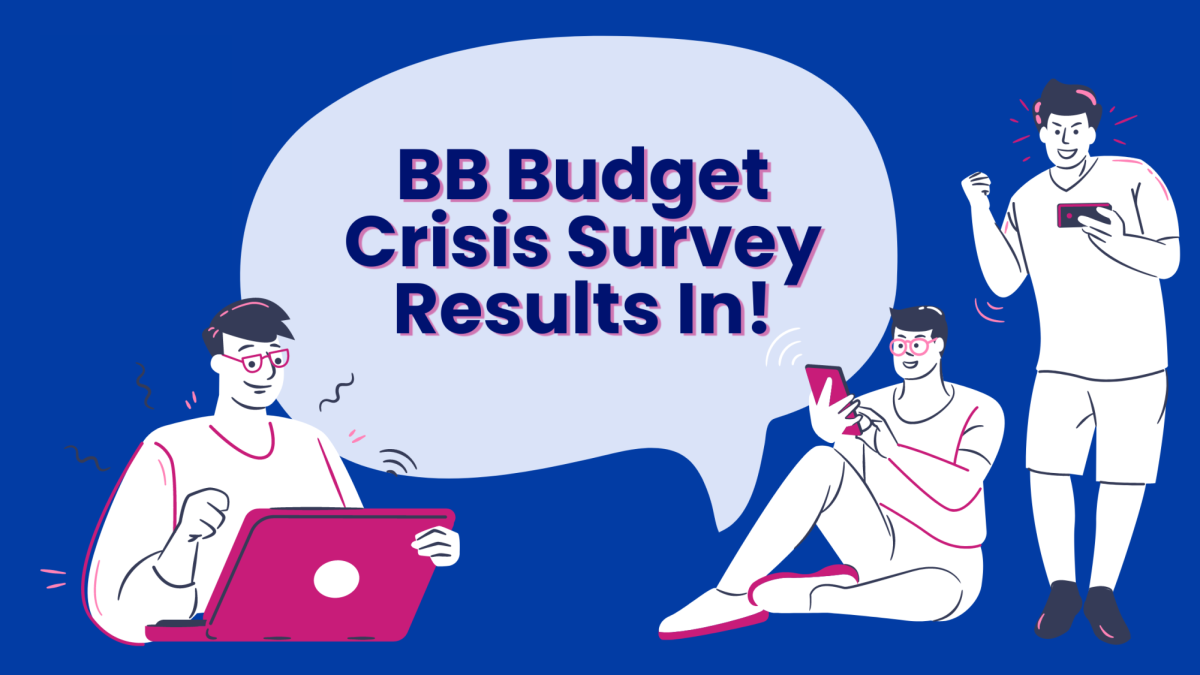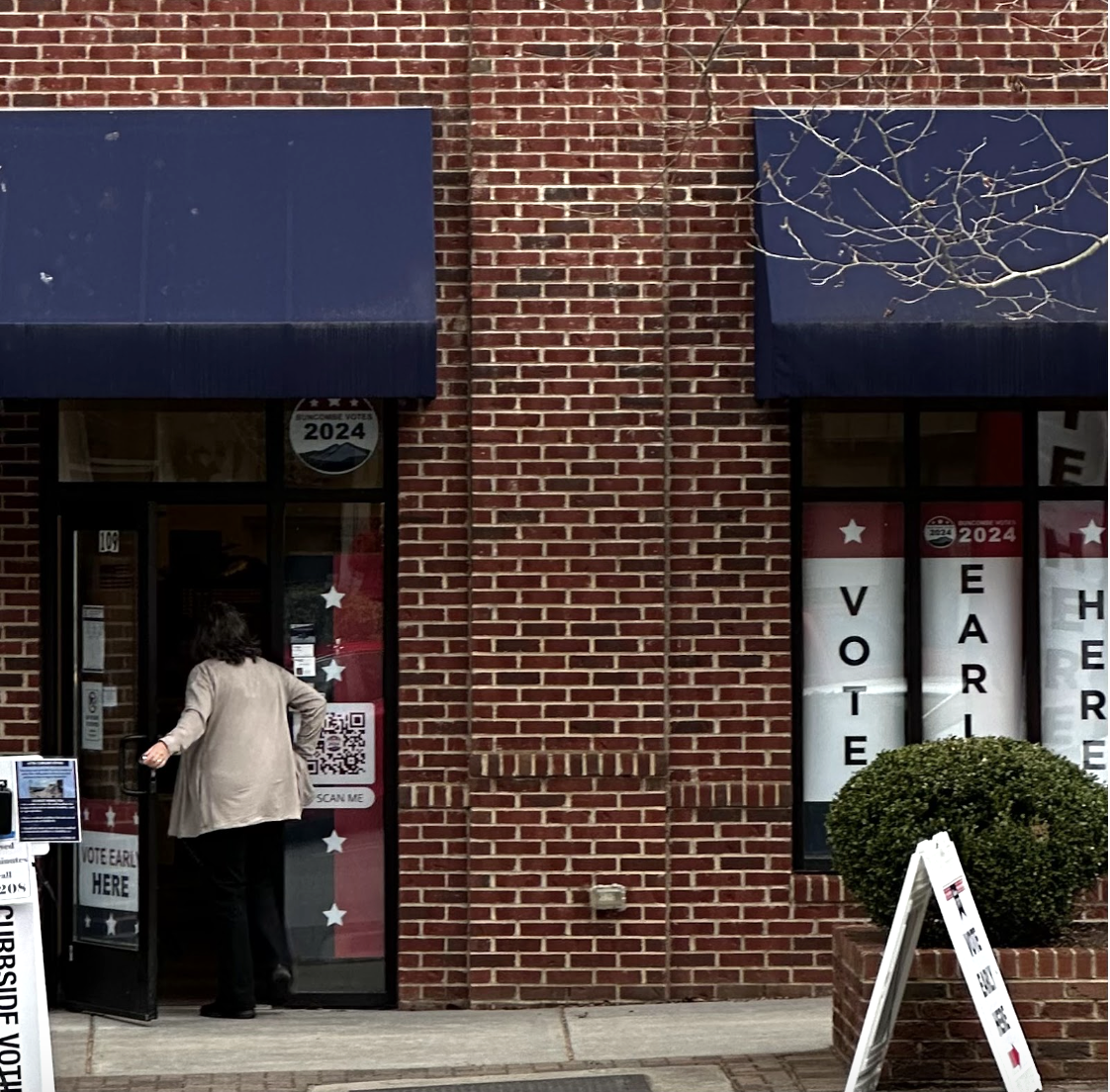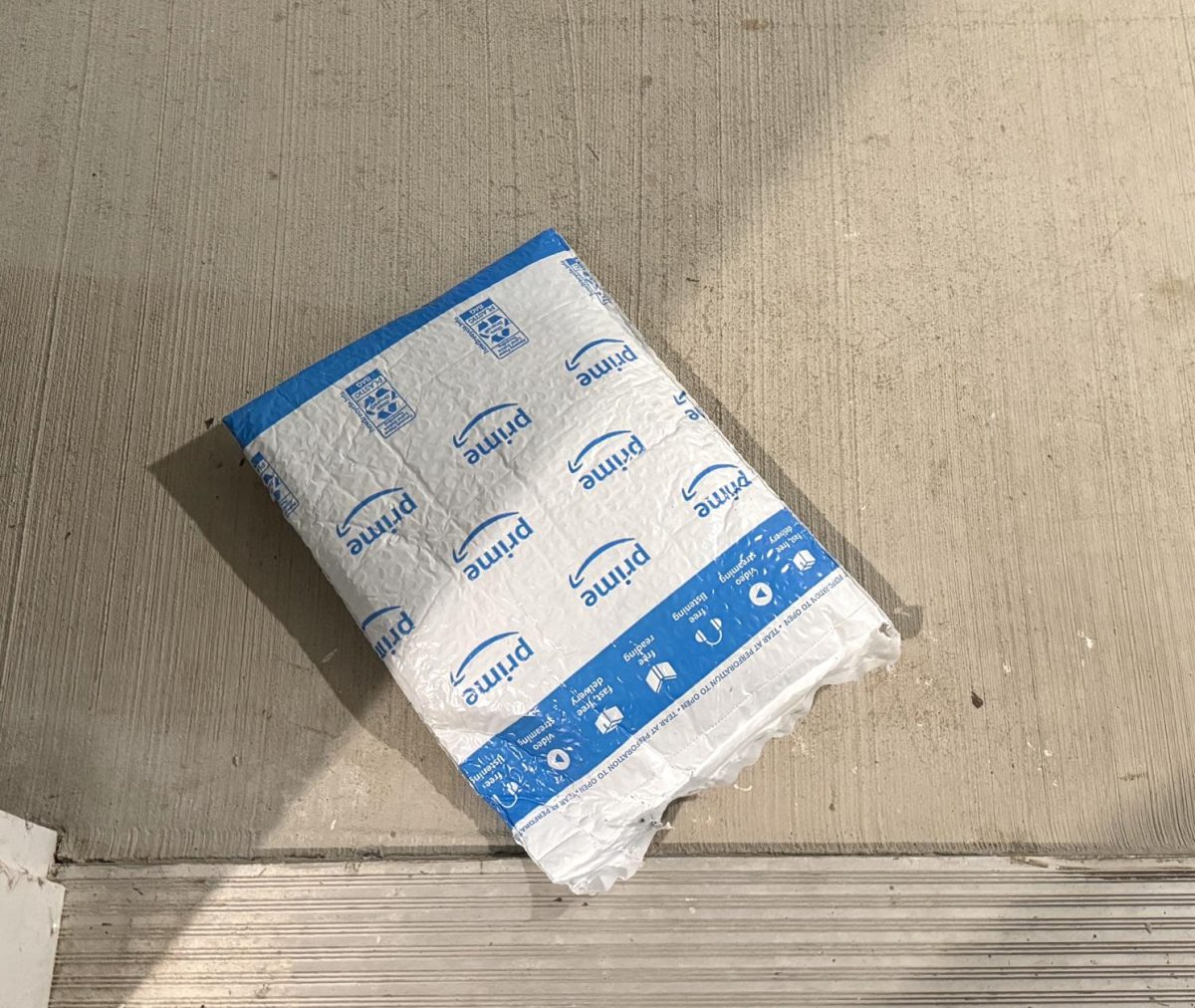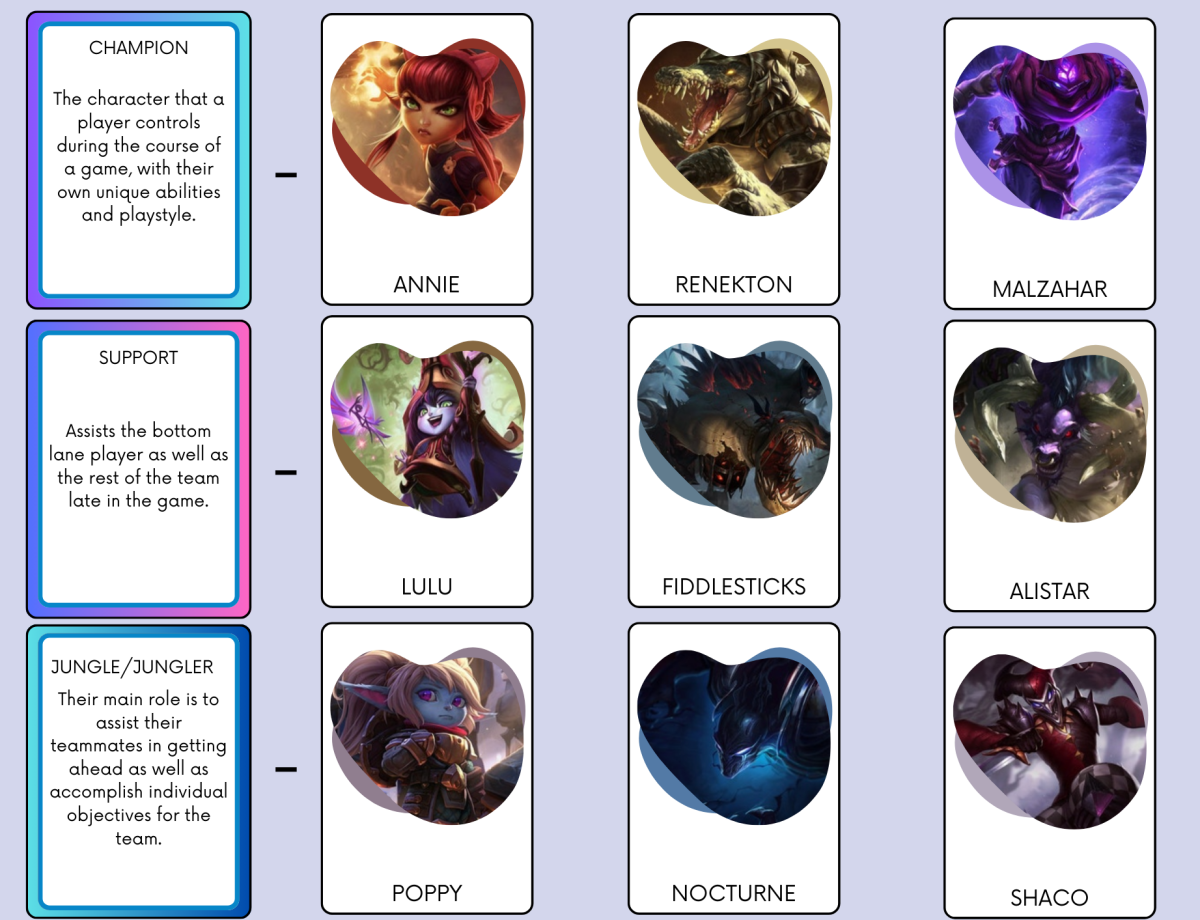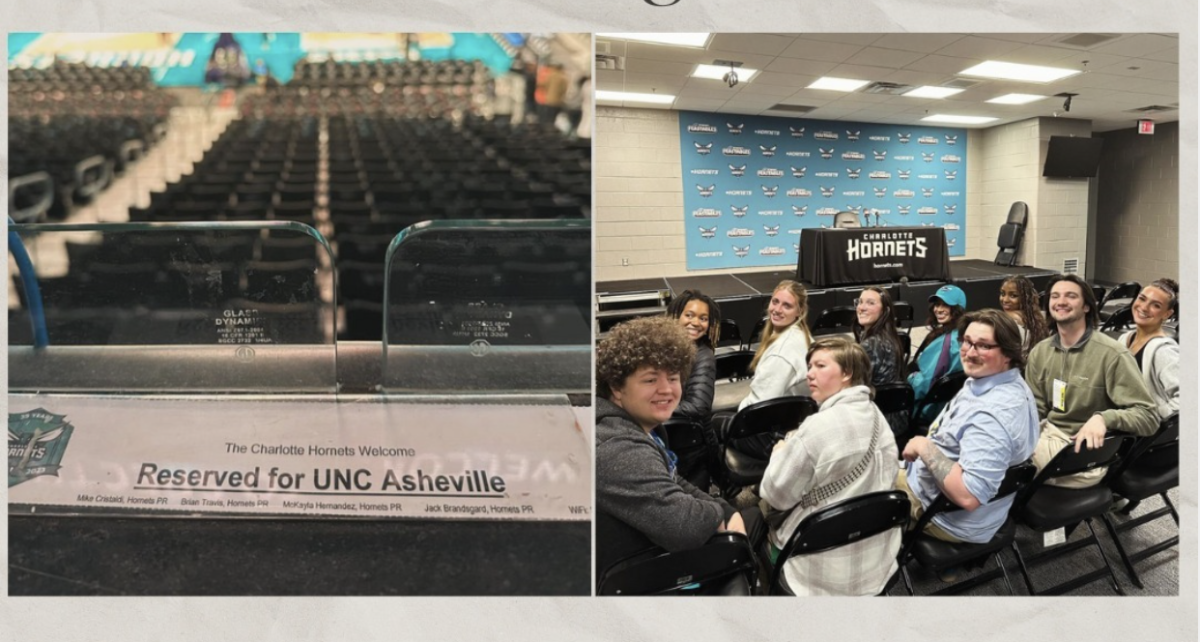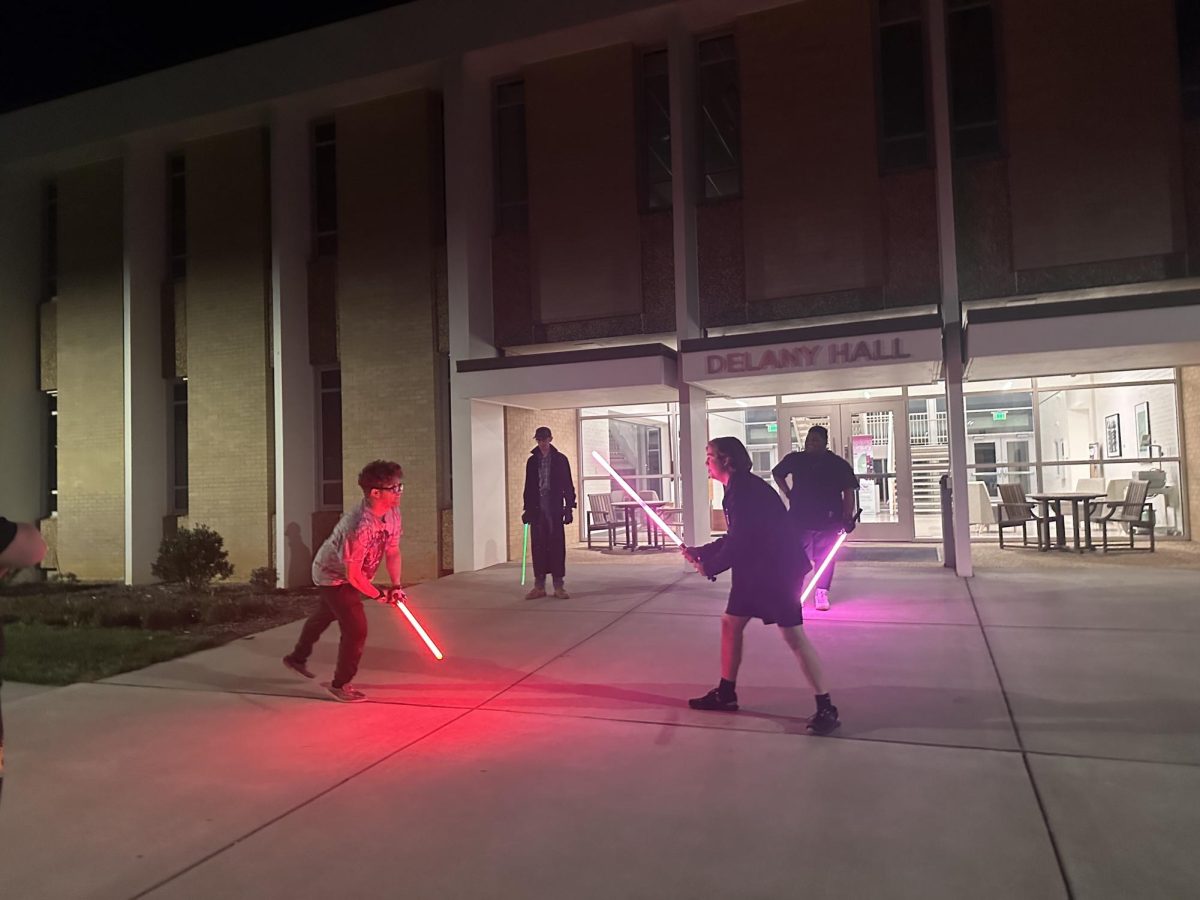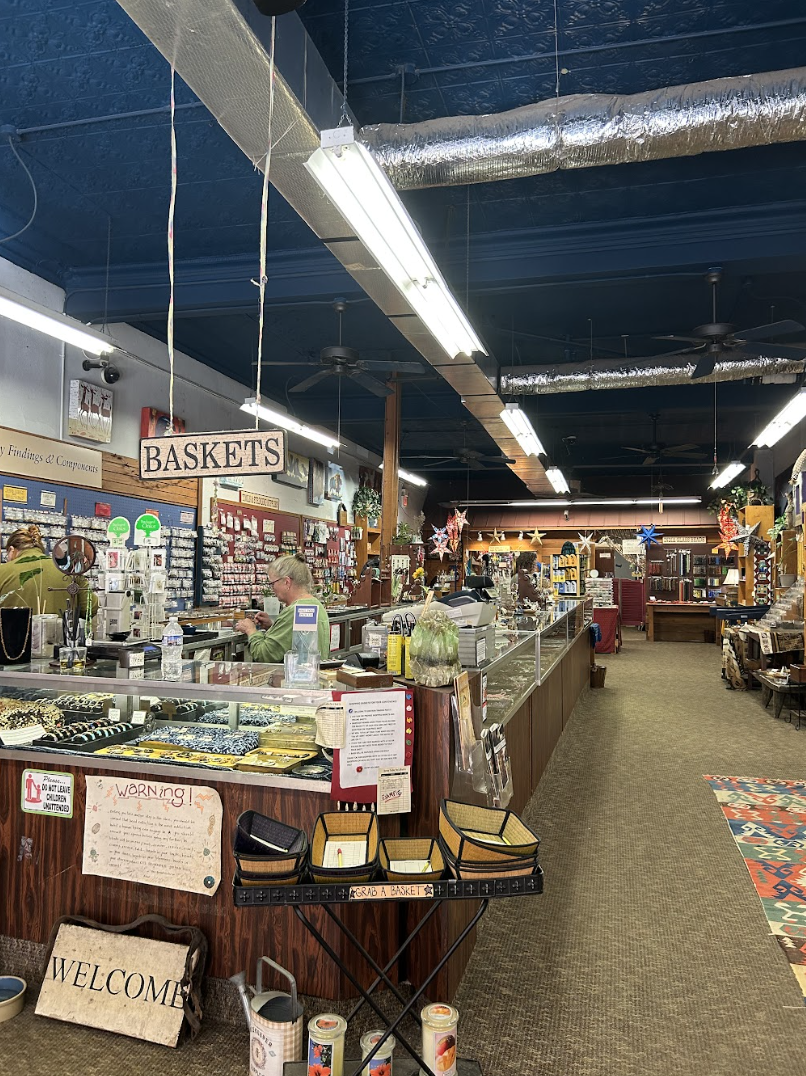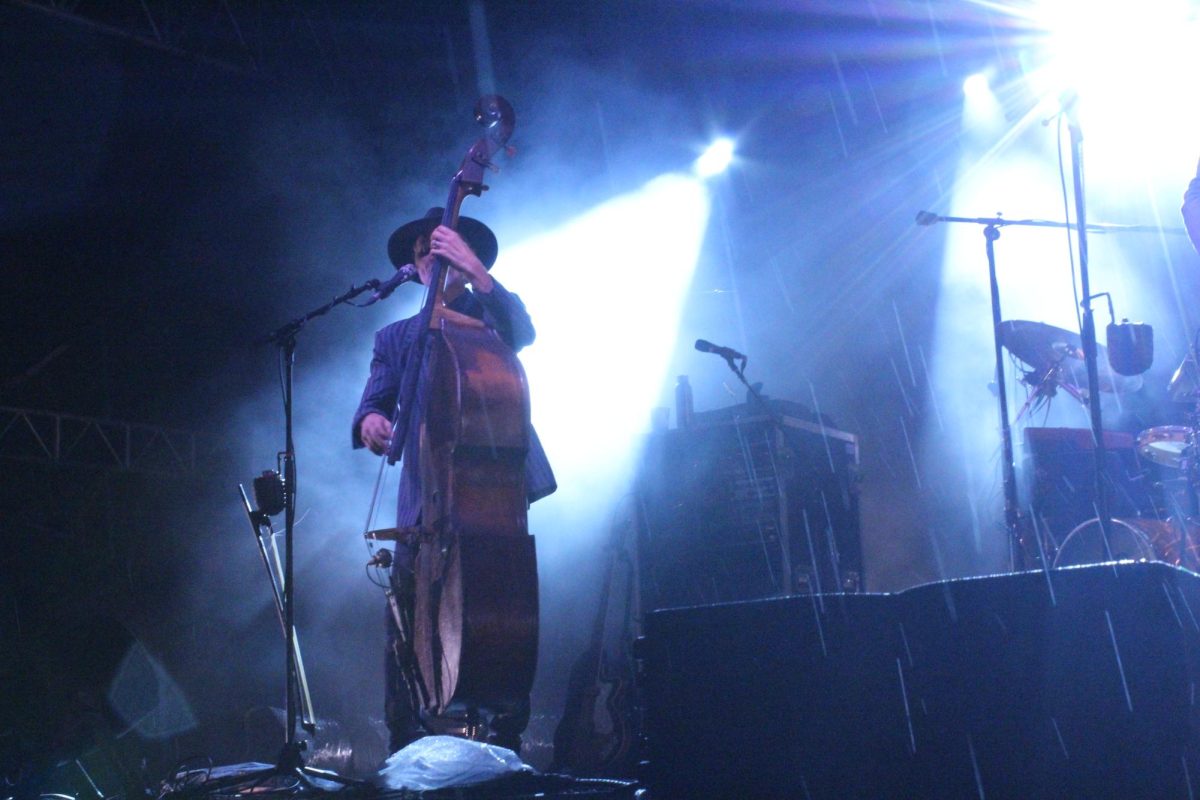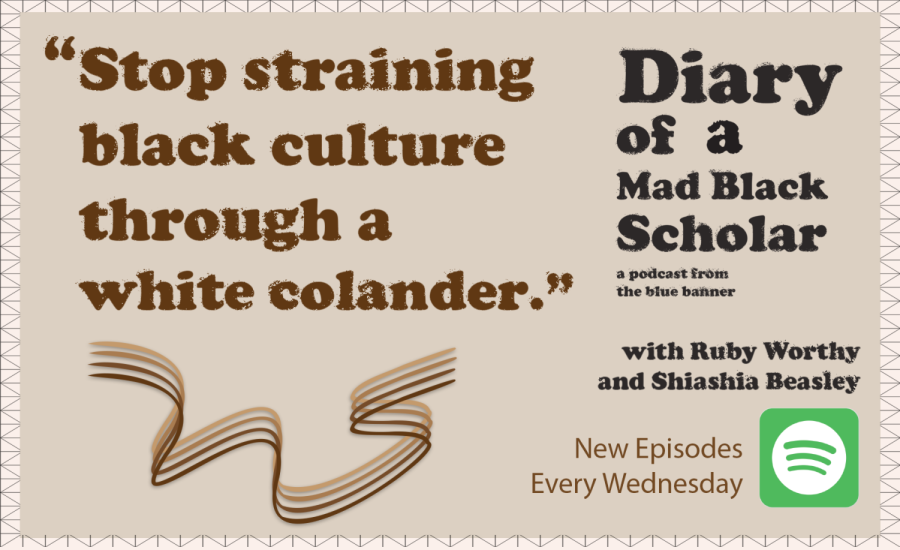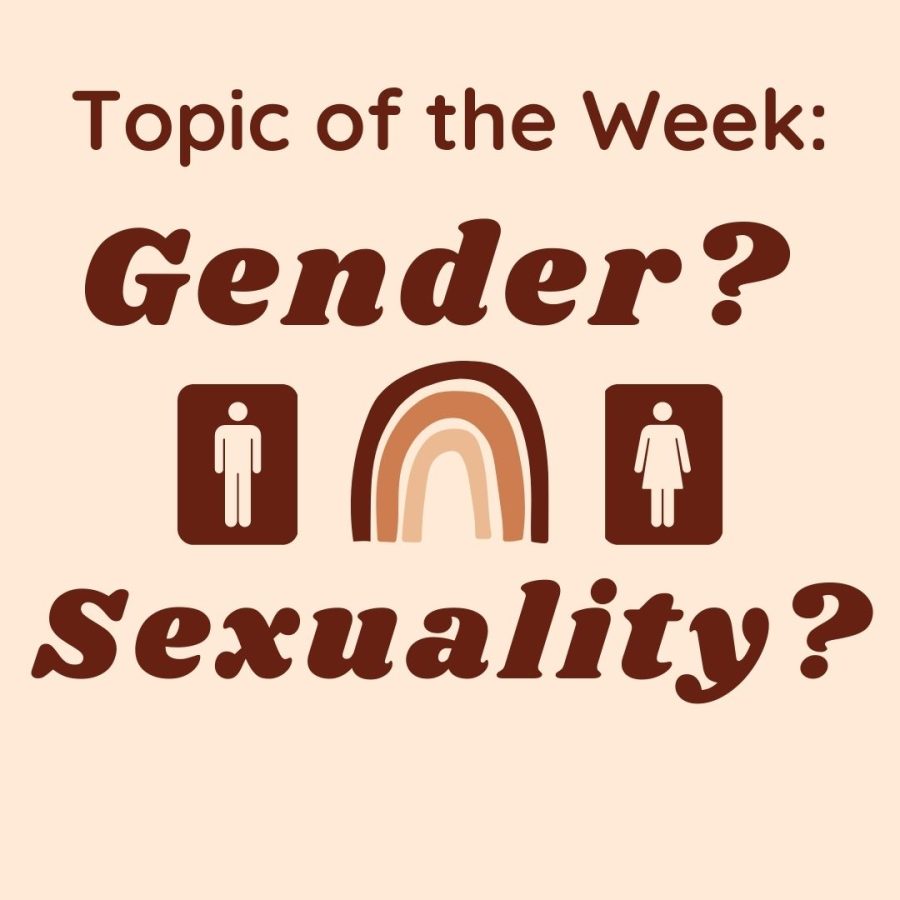Brailey Sheridan
News Editor
[email protected]
Note From the Writer,
The last few months of racial unrest have shown just how quickly social movements can change. What I report here could be wrong or outdated a year from now, but is what I’ve found to be a current truth. As a white woman in journalism, I’m committed to seeking out and reporting the truth and accepting feedback on how to be better. Recognizing my part in both social change and past complicity is part of personal and professional work.
“We’re here, we’re queer!” echoes through downtown as masked protesters in black clothes march through the city. At the front, stands London Newton and other organizers shouting into megaphones. While each of them come from different backgrounds they’ve all got some things in common: they’re Black and they’re queer.
“I think we have to center the most marginalized people in every movement because Black men being saved doesn’t save Black trans women from being murdered. I think that’s why it’s become Black-and-woman-led, at least in Asheville,” Newton said.

This summer, Black and queer women and non-men took the lead in organizing Black Lives Matter protests in Asheville. Protests followed George Floyd’s murder in Minneapolis by Officer Derek Chauvin of the Minnesota Police Department, according to Newton.
This gendered divide illuminates the ways gender socialization plays a role in who shows up for social justice work, according to UNC Asheville Professor of Sociology Lyndi Hewitt. Most women and non-men continue to be socialized to perform in nurturing and caretaking roles. This can translate to their increased involvement in social justice work and organizing, Hewitt said.
“Care-work of all kinds is feminized, and that has always been the case. Social justice work can be considered a kind of ‘caring for the world,’ so it’s not necessarily surprising to see women, and particularly Black women and other women of color, doing some of the most important organizing. These behaviors are not necessarily expected of men,” Hewitt said.
According to Newton, Black women feel this socialization most, historically performing in caretaking roles in the master home.
“I think it’s all a reflection of Black women’s place in the master home that we are where we are now. Black women were in the home. White children were suckling Black women’s breasts. We were raising them. We were cooking and we were cleaning. We were used for the sexual pleasure of white men,” Newton said.
Today, Black women still feel the lingering effects of the master/slave dynamic. Black women make up 28% of the people in service jobs and continue to be paid ¢64 to the white man’s dollar, according to a 2019 study reported by the Economic Policy Institute.
“It’s like a balance of constantly trying to make sure that my labor isn’t going to be exploited and also we’re not going to be in the conversation unless we are the face of the movement,” Newton said.
The intersections of race, gender and class make it necessary for Black women and non-men to center themselves in social justice work to ensure their needs are attended to and heard.
In 2017, the homicide rate of Black women 44 years old and younger was higher than any other female population, according to the Center for Disease Control. Additionally, in 2019 a majority of the 27 tracked deaths of transgender and gender non conforming folks due to fatal violence were Black transgender women, the Human Rights Campaign said.
“We know it’s going to be Black men who are safe first, like, first they’re going to start saying something about Black men, and then they’re going to consider including Black women and then maybe trans women,” the 20-year-old said.
According to Newton, centering women and non-men in organizing doesn’t mean others, white men and women included, shouldn’t show up for racial justice work. Rather, they need to show up to listen and elevate the Black voices already there.
“White men and white people in general, you show up and you take instruction. Like, when I say, ‘Jump’ you say ‘How high?’ If you are for this movement and you trust Black people to know what they need, then you know that you don’t get in at this table,” Newton said.
Black and queer women and non-men drive social change
Gender socialization teaches men, women, and gender-nonconforming folks how to behave and interact with others in a way that is consistent with what society expects of their gender identity, according to Professor of Sociology Volker Frank. Some common examples of gender socialization include sayings like “Boys don’t cry” “Socialization is still very much gendered. It’s still gendered in the U.S. and in very progressive countries like Denmark or Sweden,” Frank said. “Socialization isn’t just raising a kid at home or in an institution. It’s also
raising a person, making a person that has a gendered outlook that sees him-, her-, themselves as a gendered person or non-gender person and, therefore, is received accordingly by society or is told by society that they’re better and what they’re not better at.”
According to Frank, this socialization oftentimes teaches women they are best suited for caretaking or mothering roles, while men are taught they are more fitting in leadership positions.
In 2018, 88.7% of nurses, 94.5% of child care professionals and 83.8% of teaching assistants were women, according to the U.S. Department of Labor. Conversely, women were 7.4% of the CEOs on the Forbes Fortune 500 list in 2019.
According to Newton, Black women feel the effects of this socialization at home and at work. In 2019, Black women made 21% lower than white women annually, illuminating Black women’s disproportionate employment in low paying service work, EPI reported. Despite being paid lower wages, 80% of Black mothers serve as the breadwinner for their families.
“Historically, Black women, in society and in our family structures, 99% of the time are leading. We are pulling everything from scraps and keeping our families together. We are community mutual aid. We’re raising children, we’re breadwinners. So in almost every setting, we’ve been the ones running everything,” Newton said.
Robin Funsten, a community conflict consultant with more than five years of experience in racial justice and racial equity, said racial justice organizing is no exception to this gendered socialization.
“I think it comes down to the socialization of women as caretakers and social justice is about caring about humans,” Funsten said.
This organizing doesn’t always look like holding a megaphone at a protest, Black women taking care of kids or organizing church dinners also serve as the backbone of community building and social change, Funsten said.
“I’ve said for 15 years, if you want something to happen, if you want something to move in your community, you gotta ask the church ladies, and I’m not a church lady, but if you look at any big movements, especially the Civil Rights Movements, it happens in community space and it happens in around food and around the babies, right? Those are all, you know, traditionally and historically, and for the long term, women’s responsibility stuff,” Funsten said. “I don’t like it, but I think it’s changing.”
Black queer women and non-men had prominent roles in queer liberation and the Civil Rights Movement. Despite this long history of organizing and leadership, Newton said Black and queer women and non-men seldom receive recognition for their work in organizing and are oftentimes overlooked for prominent male figureheads or emotional white women.
“When you look at the Civil Rights Movement, it looks like it was men doing it and it doesn’t make sense because not only does the Black community rely on Black women, so do white queer people and white people. People in the workplace rely on Black women to do things and we have to do a disproportionate amount of labor emotionally so it’s just this lack of consistency,” Newton said.
Gendered dynamics, racial lines influence social justice
According to Newton, showing up for social justice work means showing up with the intention of listening to and elevating Black and queer women and non-men.
“The thing is, yes, this is a community thing and restorative justice and ending racism are community efforts. We should not be mirroring the white supremacist’s leadership structures that we’ve grown up with, but also their voice should be leading in this movement,” Newton said.
Steve Cooperman, an organization consultant in Asheville with many years of experience in racial equity, said, some white men do not enter these spaces because it requires them to give up some of their power to Black women and non-men.
“There is a piece of power in terms of what white men in certain positions would have to give up,” Cooperman, 63, said.
This relinquishing of power goes against the gender socialization many received. Cooperman said, unlearning more masculine ideals of gender socialization like individualism and leadership and learning more feminine ideals like community building and caretaking allowed him and others like him to get into racial justice and take the back seat.
“It’s clear that we all have masculine and feminine qualities. That doesn’t change the fact that I’m a male-bodied person, but I’m an emotional person, which is normally associated with femininity. I’m very sensitive. I’m not super willful or direct. I’m not very ambitious in the sense of the way the world would identify it. And when I show up in spaces, I can come across like I have all the answers, I’ve been conditioned for that. I’m a consultant, I’ve been a consultant and there’s an expectation that I go into these spaces having answers. But the way I work is I don’t have the answers. We’re doing this together. It’s collaborative,” Cooperman said.
Newton said toxic masculinity also henders Black men from entering into women and non-men dominated spaces, but additional traumas could also cause them to keep their distance from racial justice organizing.
“I think at the same time we’re talking about Black liberation, we have to talk about trauma and feelings and stuff like that. I think in some ways it’s really hard for them to talk about it. Understandably so,” Newton said. “I also think there’s a perception that this is a Black men’s issue. I think it can be really traumatizing to be in spaces like that. When you both have toxic masculinity and you don’t want to admit weakness, but you also are kind of in the pocket of a situation and you can’t express fear. It’s not something they might be open to conversation with.”
Both Black men and white men must come to terms with the fact that racial justice organizing centers Black and queer women and non-men, Newton said. Once that is understood and traumas are healed, it’s just a matter of showing up, she said.
“I think that intimidation, it seems to me might come from a place of being used to being able to walk into a room and take control. Not even necessarily in a violent way, but just having their voice be in a lot of sports and being listened to as a loud voice.
That isn’t the case right now,”Newton said.
Newton said while white women show up more frequently than white men or Black men in racial justice spaces their presence doesn’t always offer the support Black women need. For example, Newton said she has designated white people to walk with her during protests as a protective body. Sometimes these designated white women talk to her during this work. Newton said this is not only distracting but performative.
“In my experience at these protests, when I need designated white people the white women are always speaking and I’m like, ‘Literally, why are you speaking?’ They don’t realize that they also need to shut up because a lot of the time white women have more power than anyone else in this situation,” Newton said.
Afro Latina organizer Michelle Padrón said white women can’t see the ways their whiteness protects them, even within a patriarchal society.
“I think just in general, in these settings and in other settings, white women latch on to their oppression being women and do not know how to take a back seat when the oppression is coming from their own whiteness. They still see themselves as being able to be those loud voices, but they shouldn’t be,” Padrón, 22, said.
Funsten said white women also have to do some internal work before being able to recognize their place in racial justice work. As white women find their voices within the patriarchal system, they can’t overpower Black women’s voices. Rather, they should uplift them.
“I think that shows up a little bit more clearly with women because we can tap into, I can tap into places in myself that feel discriminated against. A thought that I have had for a while is that those women who do their work in order to be able to be in this work long term have had to do a decent amount of their own self-worth work,” Funsten said. “We have to deprogram some things about the world by making sure we’re claiming our power and making sure we’re in our worthiness. We’ve had to do that type of work to step into our power and claim ourselves and all that ends up budding up against this like “OK, but in this space, you need to take a back seat.”
The future of showing up as white men and women
Showing up doesn’t always look like protesting and sit-ins, Newton said. Rather white men and women can show up for Black and queer women and non-men by opening their wallets and paying reparations, doing research for Black organizers and taking care of their communities.
“We all have different places in this movement. My place is with the megaphone, another Black organizer is with planning routes. Some people might need to give us money, donate food and water, or serve as security for Black bodies. I’ve had people do research this summer on politicians for me,” Newton said.
Racial justice work requires some self-awareness about why and how white people act in those spaces, Cooperman said. Asking oneself questions first allows white folks to minimize their harm in racial justice spaces.
“Being part of the conversation and learning, ‘OK, more in an individual way, how am I showing up? What are the things I’m doing that are creating harm? What are the ways I can be intervening when I’m seeing stuff,’” Cooperman said.
White people also need to practice humility before showing up, Funsten said. From a place of humility, they can
open themselves up to the real needs of Black and Indigenous people of color, Funsten said.“It means showing up with your own lens so that you’re not relying on other people to educate you and a lot of flexibility, openness and willingness to learn. I think it takes humility and paying attention to your own triggers and the ego stuff in a way that doesn’t immobilize you,” Funsten said. “I guess at the forefront of it all, just listening so that it’s not just listening with your ears, it’s listening with your whole intention to understand.”
This personal reflection allows white folks to open themselves up to listen and consistently show up in a way that serves BIPOC and not just themselves, as they aren’t the saviors, only the support, Pardón said.
“It’s not the thing that is going to make you a savior. That is not what we need — a savior. We need someone who’s going to support us in the way that we need to be supported,” Padrón said.
